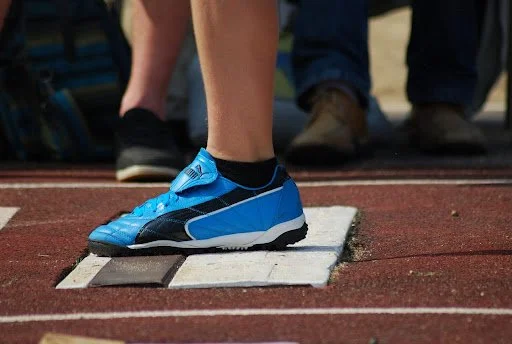5 Tips on How to Avoid Blisters on Your Feet on Long Walks
Walking is a simple and accessible activity that can bring countless benefits to your health and well-being. In addition to improving your physical fitness, walking helps reduce stress, improve blood circulation and strengthen your immune system. However, when it comes to long walks, blisters on your feet can become a major problem and ruin your experience. In this post, we will present 5 important tips on how to avoid blisters on your feet during long walks and ensure a more comfortable and enjoyable experience.
What causes blisters on feet?
Foot blisters can be caused by a number of factors, such as friction between the foot and tight or new shoes, wearing wet or synthetic socks, burns, or even skin conditions such as contact dermatitis, mycoses or dyshidrosis.
These blisters can appear on different parts of the feet, such as the heel, toes, or sole. When they appear, blisters can cause discomfort and interfere with daily activities, making it difficult to walk or wear shoes. It may seem like an easy solution, but popping the blister is not recommended, as it can create an opening in the skin, allowing bacteria to enter and causing infections.
The most recommended treatment for foot blisters usually involves relieving pressure on the area and leaving the blister intact, as it tends to disappear on its own within a few days.
Why shouldn't you pop blisters?
It is recommended not to burst the blister, as this increases the risk of skin infection. In general, the blister forms to protect the inflamed skin tissue. This prevents impacts and stops viruses and bacteria from entering, which can cause infections.
If the blister is very large and causing discomfort, it is possible to drain some of the fluid, but it is important to use the proper technique to avoid infection. It is advisable to have the drainage done by a professional, as this reduces the risk of infection.
After removing the fluid from the blister, the professional may apply an ointment containing fusidic acid or another antibacterial substance to the area and cover the blister with gauze.
To ensure a comfortable and enjoyable workout, check out 5 tips on how to avoid blisters on your feet during long walks:
1. Choosing the right footwear
Choosing the right footwear is essential to prevent blisters on your feet during long walks. It is important to choose shoes that offer support and stability to your feet, without causing discomfort or irritation. There are several types of walking shoes on the market, and choosing the right model can make all the difference in preventing blisters on your feet.
One of the main characteristics of a shoe suitable for long walks is its ability to adapt well to the shape of the foot. The shoe should offer support for the plantar arch, and the width and height should be appropriate for the shape of the foot. In addition, the shoe should be comfortable enough to avoid pressure points or friction.
Another important characteristic is the quality of the material used in the footwear. The material must be breathable and resistant, to allow air circulation and protect the feet from possible impacts. The sole must be non-slip and resistant, to ensure safety and stability while walking.
Some brands specialize in shoes for long walks and offer specific models for each type of activity. It is important to try out different models and brands before choosing the ideal shoe for your needs. Therefore, remember to consider the following aspects when choosing the ideal shoe:
Comfort: Shoes should be comfortable and not tight on your feet, but they should also not be too wide, as this can cause friction and blisters.
Protection: It is important that footwear protects your feet from rocks, roots and other obstacles that may arise while walking.
Sole: The sole must be grippy and have good traction to prevent slipping and falling.
Breathability: Footwear should allow the feet to breathe, preventing the accumulation of sweat and moisture.
2. Appropriate socks
In addition to proper footwear, choosing the right socks is also important to avoid blisters on your feet during long walks. Socks should be made of breathable materials that absorb moisture from your feet to prevent moisture from accumulating and causing friction.
Cotton socks are not recommended if you want to avoid blisters on your feet during long hikes, as they trap moisture and increase the risk of blisters. Socks made from synthetic materials, such as polyester and nylon, are better suited for long hikes, as they absorb moisture and keep your feet dry and comfortable.
Socks with flat seams are also recommended, as they reduce friction and the risk of blisters on the feet.
Tips for washing and caring for socks to ensure their durability:
Wash socks by hand or on a delicate cycle in the washing machine;
Use cold or warm water and a mild detergent;
Do not use fabric softener, as it can damage the fibres of the socks;
Hang your socks to dry, avoiding using the dryer.
3. Preparing your feet before walking
In addition to choosing the right shoes and socks, it is important to prepare your feet for long walks. It is recommended to cut your toenails before walking to avoid the risk of ingrown toenails. It is also important to moisturize your feet well, with moisturizing creams or oils, to prevent dryness and cracks.
Another important tip is to avoid walking with wet feet, as this increases the risk of blisters. It is recommended to bring an extra change of socks and shoes to change into during the walk, in case it is necessary. To do this, follow these tips:
Moisturize: Moisturize your feet with a moisturizing cream or lotion a few hours before your walk. Avoid applying moisturizer immediately before your walk, as this can make your skin slippery and increase friction.
Nail trimming: Trim your toenails before walking to prevent them from pressing against your toes and causing blisters.
Protecting sensitive areas: If you have had blisters on previous hikes, consider applying a bandage or tape to sensitive areas, such as your heels and toes, to protect them while hiking.
4. Care during the walk
It is important to pay attention to your body's signals and take care of your feet to avoid blisters, stopping regularly to rest your feet and stretch. It is also important to keep your feet dry and clean to prevent the build-up of dirt and bacteria.
If you feel any discomfort in your feet, it is important to stop and check for pressure points or irritation. If necessary, it is recommended to apply protection to your feet, such as adhesive tape or silicone protectors, to prevent friction and the appearance of blisters.
5. Treatment of foot blisters
How To Treat Foot Blisters (Like A Pro)
Even with all the care you take, blisters may still appear on your feet while walking. In this case, it is important to treat them properly to avoid infections and complications. Clean the blister with water and mild soap, and apply a protective covering over it, such as a bandage or silicone protector.
If the blister is very large or painful, it is recommended to seek medical attention or a healthcare professional for evaluation and appropriate treatment.


